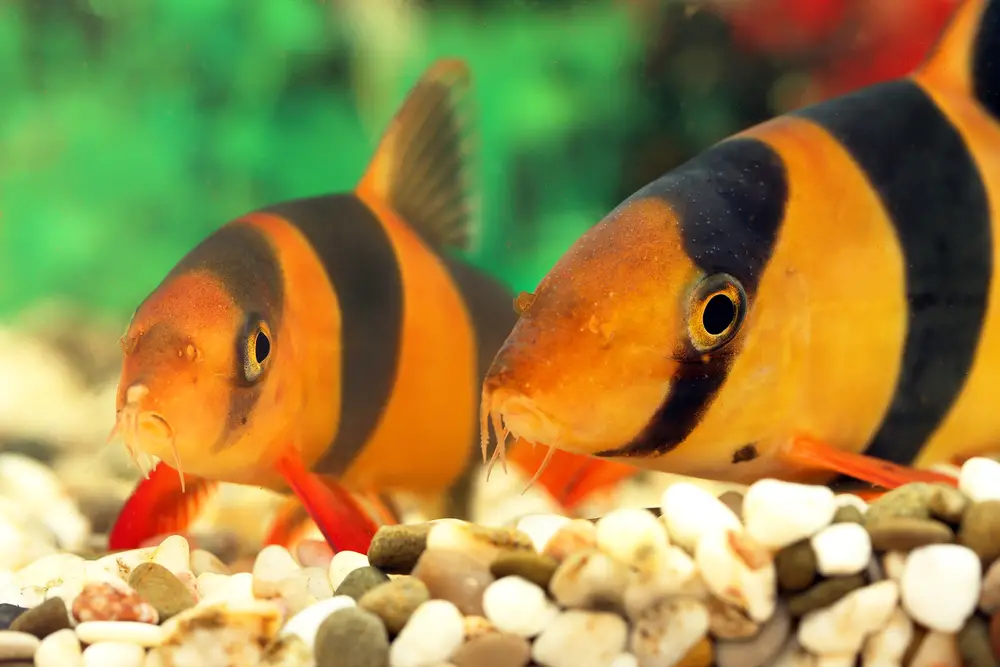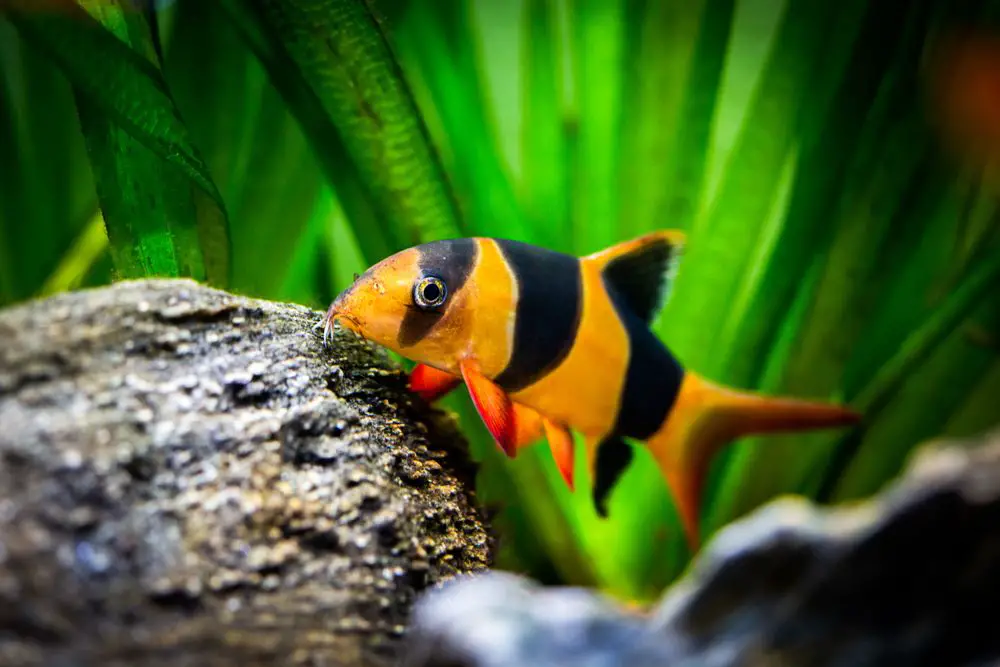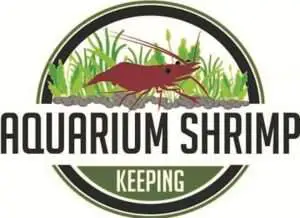Clown loaches are omnivorous and have a reputation for being opportunistic feeders. While they primarily feed on small invertebrates, plant matter, and detritus, they may eat small shrimp if given the opportunity. However, their diet can vary based on their environment and the specific conditions of their habitat.
Hello there, As someone who’s spent countless hours peering into the tranquil world of aquariums, I’ve often found myself captivated by the vibrant dance of clown loaches and shrimp. It’s a sight that can make even the most stressful day melt away. But a question that often bubbles up is, “Do clown loaches eat shrimp? The answer is I am afraid Yes They DO eat shrimp.
Understanding the Clown Loach: Natural Habitat and Behavior
Clown loaches, scientifically known as Chromobotia macracanthus, are a popular choice among aquarium enthusiasts due to their vibrant colors and playful behavior. But to truly understand these fascinating creatures, we must deeply dive into their natural habitat and behavior.
In the wild, clown loaches are found in the tropical waters of Indonesia, specifically on the islands of Sumatra and Borneo. They inhabit slow-moving and still waters, often in areas with dense vegetation and a soft, sandy bottom. This environment is rich in hiding spots, which are crucial for these shy and nocturnal fish.

Clown loaches are known for their unique behavior. They are social creatures and prefer to live in groups. In fact, they can exhibit signs of stress if kept alone or in small numbers. A group of five or more is often recommended to keep them happy and healthy.
These fish are also known for their ‘sleeping’ behavior, where they lie on their side when at rest. Don’t be alarmed if you see this – it’s a normal part of their behavior and not a sign of illness!
In terms of their diet, clown loaches are omnivorous. They feed on a variety of foods in the wild, including small invertebrates, worms, and plant matter. They are also known to eat snails, making them a natural solution for snail infestations in aquariums.
Understanding the natural habitat and behavior of clown loaches is crucial when keeping them in an aquarium. It allows us to replicate their environment as closely as possible and cater to their needs, ensuring they live a healthy and happy life.

The Diet of Clown Loaches: What Do They Really Eat?
Clown loaches are omnivorous creatures, which means they have a varied diet that includes both plant-based and meat-based foods. In their natural habitat, they feed on a mix of small invertebrates, worms, and plant matter. But what does this mean for your aquarium?
In an aquarium setting, clown loaches maintain their omnivorous diet. They happily accept a wide variety of foods, making them relatively easy to feed. However, it’s important to provide a balanced diet to ensure they receive all the necessary nutrients.
You can offer them high-quality sinking pellets or flakes as a staple diet. These are specially formulated to provide a balanced mix of nutrients. However, don’t stop there. Clown loaches appreciate variety in their diet. Supplement their staple food with fresh, frozen, or freeze-dried foods such as bloodworms, brine shrimp, or daphnia. These protein-rich foods help to keep your clown loaches in good health and bring out their vibrant colors.
as a staple diet. These are specially formulated to provide a balanced mix of nutrients. However, don’t stop there. Clown loaches appreciate variety in their diet. Supplement their staple food with fresh, frozen, or freeze-dried foods such as bloodworms, brine shrimp, or daphnia. These protein-rich foods help to keep your clown loaches in good health and bring out their vibrant colors.
One exciting aspect of clown loaches is their love for snails. They are one of the few fish that actively hunt and eat snails, which can be a benefit if you have a snail problem in your tank. However, it’s important not to rely on snails as a primary food source, as they may not provide all the necessary nutrients.
Vegetable matter should also be included in their diet. This can be in the form of blanched vegetables like zucchini, peas, or cucumbers. Some aquarists also include plant-based fish food to ensure their clown loaches are getting enough plant matter.
Remember, while clown loaches are not picky eaters, a varied and balanced diet is key to their health. Regular feeding times, usually once or twice a day, will keep them at their best. And always remove any uneaten food to maintain the water quality in your tank.

Shrimp in the Aquarium: Types and Their Vulnerabilities
Shrimp are a delightful addition to many aquariums, adding a dash of color and intrigue with their delicate movements and fascinating behaviors. However, they also have certain vulnerabilities that need to be considered when sharing a tank with other inhabitants.
There are several types of shrimp that are popular in the aquarium hobby. Some of the most common include:
- Cherry Shrimp: Known for their vibrant red color, cherry shrimp are hardy and breed easily, making them a great choice for beginners.
- Ghost Shrimp: These shrimp are almost transparent, making them an interesting addition to any tank. They are also quite hardy and easy to care for.
- Amano Shrimp: Named after the famous aquarist Takashi Amano, these shrimp are excellent algae eaters and can help keep your tank clean.
- Bamboo Shrimp: These are filter feeders that use fan-like appendages to filter food particles out of the water.
Despite their many benefits, shrimp have certain vulnerabilities. They are small and can easily become a target for larger, aggressive fish. Their small size also means they can be affected by changes in water parameters more quickly than larger tank inhabitants. Sudden changes in temperature, pH, or water hardness can be particularly harmful.
Shrimp also molt, shedding their exoskeleton to grow. During this time, they are especially vulnerable as their new shell hardens. It’s important to provide plenty of hiding spots in your tank for shrimp to retreat to during this period.
When keeping shrimp, it’s crucial to be aware of these vulnerabilities and to take steps to mitigate them. This might include carefully selecting tank mates, monitoring water parameters closely, and providing a suitable environment with plenty of hiding spots. With the right care, shrimp can thrive and become a captivating part of your aquarium community.

Clown Loaches and Shrimp: Can They Coexist in an Aquarium?
The question of whether clown loaches and shrimp can coexist in an aquarium is not a straightforward one. It largely depends on the specific species of shrimp, the clown loaches’ size and temperament, and the aquarium’s conditions.
Clown loaches are known for their opportunistic feeding habits. While they primarily feed on small invertebrates, plant matter, and detritus, they may eat small shrimp if given the opportunity. This is particularly true for smaller shrimp species like cherry or ghost shrimp, which could easily become a snack for a hungry clown loach.
However, this doesn’t necessarily mean that clown loaches and shrimp cannot coexist. Larger shrimp species, such as Amano shrimp or Bamboo shrimp, may be less likely to be eaten due to their size. Additionally, providing plenty of hiding spots in the form of plants, rocks, or driftwood can offer shrimp a refuge and increase their chances of survival.
Just remember, shrimp even large species are very vulnerable when they molt and might not survive in a tank with Clown Loaches.
It’s also worth noting that clown loaches are social creatures and prefer to live in groups. A solitary clown loach may exhibit more aggressive behavior, including predation on shrimp. Keeping clown loaches in a group can help to distribute their attention and potentially reduce the risk to shrimp.

Tips for Keeping Clown Loaches and Shrimp Together
Keeping clown loaches and shrimp together in an aquarium can be a bit of a balancing act. However, with careful planning and management, it’s possible to create a harmonious environment for both. Here are some tips to help you achieve this:
1. Choose Larger Shrimp Species: Larger shrimp species like Amano or Bamboo shrimp are less likely to become a meal for clown loaches due to their size. They are also hardy and can adapt to a variety of water conditions.
2. Provide Plenty of Hiding Spots: Shrimp need places to hide, especially when they are molting and at their most vulnerable. Provide plenty of hiding spots in the form of plants, rocks, caves, and driftwood.
3. Keep Clown Loaches in Groups: Clown loaches are social fish and prefer to live in groups. Keeping them in a group can help distribute their attention and potentially reduce the risk to shrimp.
4. Feed Your Clown Loaches Well: A well-fed clown loach is less likely to view shrimp as a potential food source. Provide a varied diet that includes high-quality pellets or flakes, as well as fresh, frozen, or freeze-dried foods.
5. Monitor Your Aquarium Closely: Keep a close eye on your aquarium, especially in the beginning. If you notice your clown loaches showing too much interest in your shrimp, you may need to reconsider your mix of species.
6. Consider a Species-Only Tank: If you’re particularly keen on keeping shrimp and are worried about their safety, you might want to consider setting up a separate shrimp-only tank. This allows you to enjoy both clown loaches and shrimp without the worry of predation.
Remember, every aquarium is unique, and what works for one may not work for another. It’s always best to monitor your specific situation closely and be prepared to make changes if necessary.

Alternative Tank Mates for Clown Loaches and Shrimp
If you’re finding it challenging to keep clown loaches and shrimp together, or if you’re simply looking for more diversity in your tank, there are plenty of other species that can make excellent tank mates for both.
For Clown Loaches:
- Tetras: Many species of tetras are peaceful and prefer to live in groups, making them a good match for clown loaches. They occupy the middle to upper levels of the tank, which can help distribute activity throughout the aquarium.
- Gouramis: These peaceful fish are often recommended as tank mates for clown loaches. They are generally calm and can add a splash of color to your tank.
- Corydoras Catfish: These bottom dwellers are peaceful and can coexist well with clown loaches. They also help keep the tank clean by scavenging for leftover food.
For Shrimp:
- Small Peaceful Fish: Small, peaceful fish like neon tetras, guppies, and mollies can make good tank mates for shrimp. They are less likely to see shrimp as food and can coexist peacefully.
- Snails: Snails can be a great addition to a shrimp tank. They are peaceful, come in a variety of shapes and sizes, and can help keep the tank clean.
- Other Shrimp Species: Different species of shrimp can often live together peacefully. For example, cherry shrimp and ghost shrimp can coexist in the same tank.
When choosing tank mates, it’s important to consider the size, temperament, and environmental needs of each species. Always research each species thoroughly to ensure they are compatible and can thrive in the same conditions. And remember, a peaceful, well-balanced aquarium is the key to happy, healthy inhabitants.
Conclusion
In the world of aquarium keeping, understanding the habits and needs of your aquatic pets is crucial. Clown loaches and shrimp, while both captivating in their own right, may not always make the best tank mates due to the loaches’ opportunistic feeding habits. However, it’s possible to create a harmonious tank with careful planning, monitoring, and the right environment. If you’re looking for more diversity, plenty of other peaceful fish can coexist well with clown loaches or shrimp.
Remember, every aquarium is unique, and what works for one may not work for another. Always be prepared to adapt and make changes as necessary. If you need any help or have any questions, please don’t hesitate to contact me. Happy Shrimp Keeping!
Frequently Asked Questions
Q. How often should I feed my clown loaches? A. Clown loaches should be fed once or twice a day. However, be careful not to overfeed them as this can lead to health issues and poor water quality.
Q. Can clown loaches live in a tank without shrimp? A. Absolutely! Clown loaches can thrive in a variety of aquarium setups. While they may eat shrimp if available, they can also live happily with a range of other tank mates or even in a species-only tank.
Q. What size tank do I need for clown loaches? A. Clown loaches can grow quite large – up to 12 inches in length – and they prefer to live in groups. Therefore, a larger tank of at least 55 gallons is recommended.
Q. What are some signs of a healthy shrimp in my aquarium? A. Healthy shrimp are active and have a good appetite. They should have clear, vibrant colors and no visible signs of disease such as spots, discoloration, or unusual behavior.
Q. How can I ensure my shrimp have enough places to hide? A. You can provide plenty of hiding spots for your shrimp by including things like plants, rocks, caves, and driftwood in your aquarium setup.
Q. What should I do if my clown loach is showing aggressive behavior towards the shrimp? A. If a clown loach is showing aggressive behavior, it may be best to separate them from the shrimp. This could involve moving the loach or the shrimp to a different tank. Always monitor your tank closely to ensure the safety of all its inhabitants.
